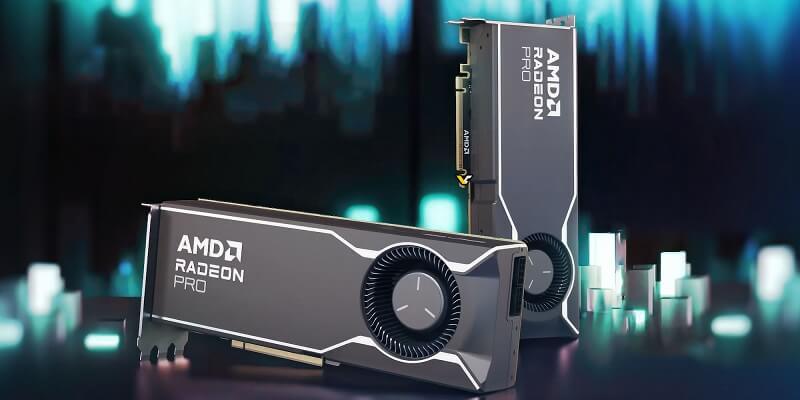AMD is set to release a new and affordable workstation solution, the Radeon Pro W7600, based on the RDNA 3 GPU architecture. This expansion of AMD’s PRO lineup brings budget-friendly options to professionals seeking an entry-level workstation GPU. With the aim of delivering reliable performance without compromising quality, the AMD Radeon Pro W7600 is poised to make its mark in the workstation market.
Overview of the AMD Radeon Pro W7600 GPU
The AMD Radeon Pro W7600 GPU is built upon the highly anticipated RDNA 3 GPU architecture and features the powerful Navi 33 chip. This combination ensures that professionals can harness superior computing capabilities while working on resource-intensive tasks.
With 32 compute units and 16 WGPs, the Radeon Pro W7600 offers a balanced configuration for efficient parallel processing, enabling seamless multitasking and fluid graphics rendering. Running at a clock speed of 1940 MHz, this GPU delivers an impressive 16 TFLOPs of computing horsepower, ensuring swift and responsive performance even when handling demanding workloads.
Compute Performance and Memory Configuration
The AMD Radeon Pro W7600 packs a punch when it comes to compute performance. With its exceptional 16 TFLOPs, professionals can expect accelerated task execution, faster rendering times, and improved overall productivity. This GPU’s compute capabilities are further enhanced by its 8 GB VRAM capacity based on GDDR6 technology. The 128-bit bus interface ensures swift data transfer rates, reducing latency and optimizing performance.
To further bolster its performance, the AMD Radeon Pro W7600 features 32 MB of Infinity Cache onboard the chip. This smart cache technology minimizes memory bottlenecks, delivering enhanced efficiency and reducing data retrieval times. Consequently, professionals can experience smoother workflows and seamless multitasking, even during resource-intensive workloads.
Power Consumption and Connectivity
Efficiency and power economy were key considerations in the design of the Radeon Pro W7600. With an estimated power consumption of around 150W, this GPU strikes a balance between performance and energy efficiency. Power is conveniently supplied through a single 8-pin connector, simplifying installation and ensuring compatibility with various workstation setups.
Performance Benchmarks
In a recent leak, the OpenCL and Vulkan scores for the AMD Radeon Pro W7600 were unveiled. Impressively, the OpenCL score reached 74,839, highlighting the GPU’s exceptional computing power. Additionally, the Vulkan score of 77,260 further solidifies the W7600’s capacity to handle complex graphics workloads effectively. These benchmarks are indicative of the GPU’s ability to offer reliable and efficient performance, making it a compelling choice for professionals seeking an entry-level workstation solution.
Implications for the Entry-Level Workstation Market
The introduction of the AMD Radeon Pro W7600 GPU significantly expands AMD’s offerings in the entry-level workstation market. This budget-friendly option empowers professionals to access the benefits of a dedicated workstation GPU without breaking the bank. The Radeon Pro W7600 combines impressive compute performance, ample memory configuration, and smart cache technology, making it a compelling choice for professionals seeking optimal performance at an affordable price point.
The AMD Radeon Pro W7600 brings affordable and powerful workstation capabilities to professionals operating in the entry-level market. With its RDNA 3 architecture, the Navi 33 chip, and a robust configuration, this GPU delivers exceptional computing performance, efficient memory management, and optimized power consumption. As AMD continues to expand its PRO lineup, the Radeon Pro W7600 stands as a testament to the company’s commitment to providing budget-friendly options without compromising on performance. Professionals can now fully embrace their creative workflows with the knowledge that there is an entry-level GPU that meets their demanding requirements.

